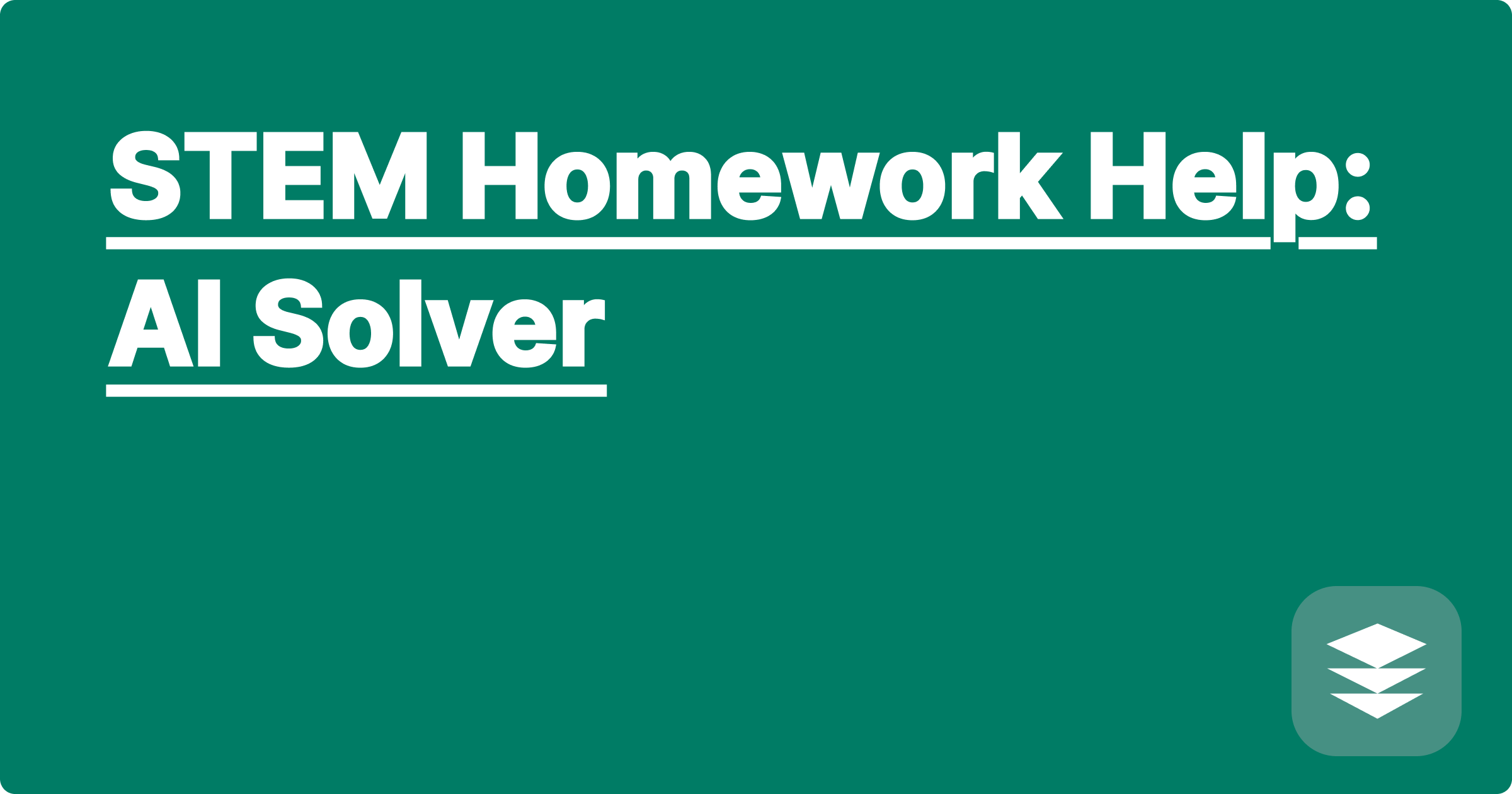
The demanding world of STEM education and research often presents complex challenges that can leave students and researchers feeling overwhelmed. From intricate mathematical equations to elaborate coding assignments, the sheer volume and complexity of the work can be daunting. Fortunately, the emergence of powerful AI tools offers a new avenue for tackling these challenges, providing intelligent assistance and unlocking new possibilities for academic success. These AI-powered solutions can act as virtual tutors, offering step-by-step guidance, generating potential solutions, and even helping to understand complex concepts.
For STEM students, these AI tools can be invaluable for navigating challenging homework assignments and grasping difficult concepts. Researchers can leverage these same tools to accelerate their work, explore new ideas, and even automate tedious tasks. This allows them to focus on the more creative and strategic aspects of their research. The ability to access this kind of support can significantly impact both learning outcomes and research productivity, ultimately shaping the future of STEM fields.
STEM fields are inherently complex. They often involve abstract concepts, intricate calculations, and extensive problem-solving. Students frequently struggle with applying theoretical knowledge to practical applications, leading to frustration and difficulty completing assignments. Researchers, while possessing a deeper understanding, can also face roadblocks when dealing with highly specialized problems or massive datasets. These challenges are further compounded by time constraints, limited access to expert guidance, and the ever-evolving nature of STEM disciplines. The traditional methods of learning and research, while valuable, sometimes struggle to keep pace with the increasing demands of these fields. This is where AI-powered solutions offer a transformative approach.
AI tools like ChatGPT, Claude, and Wolfram Alpha offer unique capabilities for tackling STEM challenges. ChatGPT and Claude excel at understanding and generating human-like text, making them ideal for explaining complex concepts, providing step-by-step solutions to problems, and even generating code in various programming languages. Wolfram Alpha, with its powerful computational engine, is particularly effective for solving mathematical equations, performing symbolic computations, and providing factual information across a wide range of scientific domains. These tools can be used individually or in combination to address a wide spectrum of STEM problems, offering a versatile and powerful toolkit for students and researchers alike.
Let's consider a scenario where a student needs to solve a differential equation. First, they can clearly articulate the problem to an AI tool like Wolfram Alpha. This might involve typing the equation directly into the input field, ensuring proper formatting and syntax. Next, Wolfram Alpha processes the input and utilizes its computational engine to find the solution. The solution is then presented to the student, often accompanied by step-by-step explanations and alternative solution methods. For more complex problems, a student might use ChatGPT or Claude to understand the underlying concepts behind the differential equation. They could ask the AI to explain the different types of differential equations or provide examples of similar problems. This helps build a stronger conceptual foundation and facilitates a deeper understanding of the problem-solving process.
Consider the task of calculating the integral of a complex function. A student could input the function, for example, ∫x^2 * e^x dx, into Wolfram Alpha. Wolfram Alpha would then compute the integral, providing the result: e^x(x^2 - 2x + 2) + C. Similarly, a researcher working with a large dataset could use ChatGPT to generate Python code for data analysis. They might provide a prompt like, "Write Python code to calculate the standard deviation of a list of numbers." ChatGPT would then generate the corresponding Python code, saving the researcher valuable time and effort. These are just a few examples of how AI can be practically applied in STEM education and research.
To effectively use AI in STEM, it’s crucial to develop a strong understanding of the underlying concepts. AI tools should be used as supplements to learning, not replacements for traditional methods. It's essential to actively engage with the material, critically evaluate the output of AI tools, and seek clarification when needed. Furthermore, learning to formulate clear and precise prompts is crucial for getting accurate and relevant results from AI. Experimenting with different AI tools and exploring their various capabilities can also enhance understanding and improve problem-solving skills. Finally, remember to cite AI assistance appropriately in academic work, acknowledging its contribution to the research or assignment.
In conclusion, AI tools offer a powerful new approach to navigating the complexities of STEM education and research. By understanding the capabilities of these tools and integrating them strategically into the learning and research process, students and researchers can unlock new levels of efficiency and understanding. Exploring these AI-powered solutions and learning to use them effectively is a valuable investment in future academic and professional success. Embrace the power of AI and embark on a journey of enhanced learning and discovery in the exciting world of STEM.
Ace STEM Exams: AI Study Planner
AI for Lab Data: Analyze Faster
STEM Prep: AI-Powered Flashcards
AI Coding Assistant: Debug Code
Engineering AI: Design & Simulate